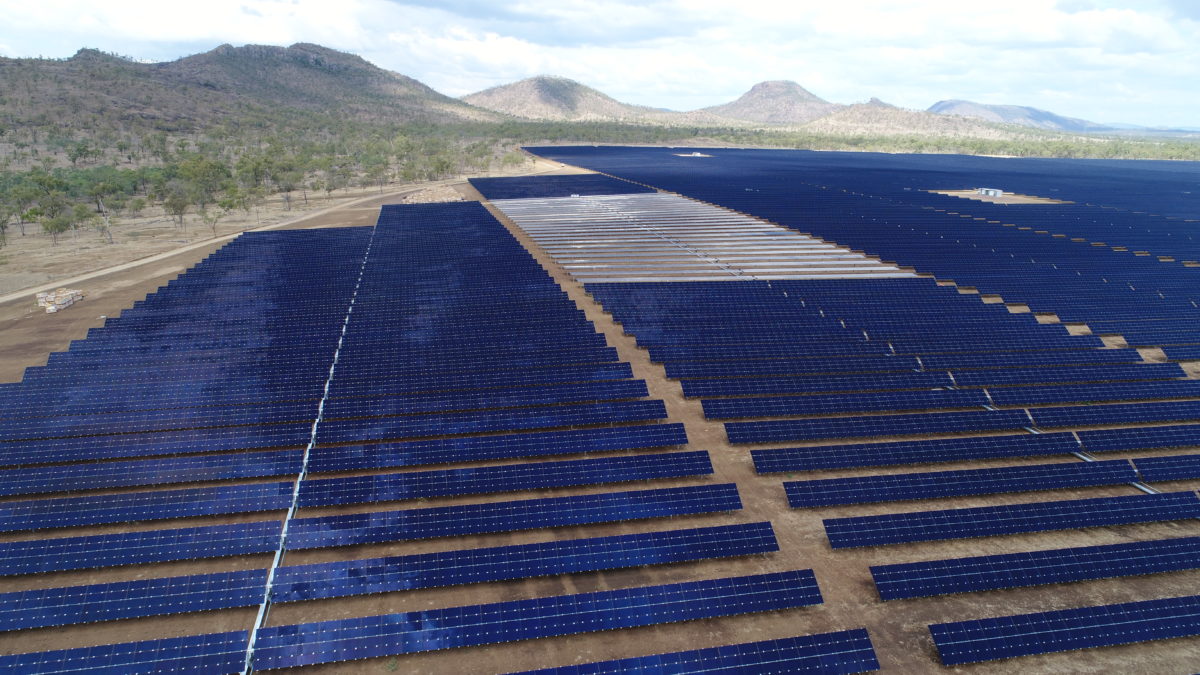Nine more solar farms could see their output cut to zero due to system strength issues in northern Queensland. The warning was made in a market notice released by the Australian Energy Market Operator (AEMO) on Monday after three other renewable energy generators in that part of the state were warned their output could be slashed to zero under certain conditions.
In March, AEMO issued a warning that the 100 MW Haughton and 125 MW Sun Metals solar farms and the Mt Emerald wind farm could be significantly curtailed and even restricted to zero due to a risk of oscillations that could be caused by inverter-based generation under certain scenarios, such as lightning strikes or bushfires.
Following the official declaration of a system strength shortfall in northern Queensland in April, AEMO and transmission network service provider Powerlink have continued to investigate system strength requirements in the region. New constraint equations were released on Monday revealing that nine additional solar projects are under threat of curtailment.
The list of affected solar farms includes ESCO Pacific’s Ross River (148 MW), FRV’s Clare (100 MW), Genex’s Kidston 1 (50 MW), RATCH-Australia’s Collinsville (42.5 MW), Adani’s Rugby Run (65 MW), and four generators in Edify Energy’s portfolio: Daydream (180 MW), Hamilton (69 MW), Hayman (60 MW) and Whitsunday (69 MW).
As announced by AEMO, the limitations on the output of these solar farms will be closely connected to the operation of other nearby hydro (Kareeya) and coal (Gladstone, Stanwell and Callide) generators. The new equations show that under certain conditions relating to the operation of these generators, the nine solar farms will be allowed to export from 80% to 100% of their output. If the new combinations are not met, they will be cut to zero.
However, for all of the equations that allow nine generators to export power, the Haughton and Sun Metals solar farms and the Mt Emerald wind farm are limited to zero megawatts. As announced earlier, these three projects are already restricted to zero output under certain conditions and allowed to operate at their full capacity only if Barron Gorge and Kareeya are running all their hydro plant units while being backed by the Gladstone, Stanwell, and Callide coal-fired generators.
While it is unclear how often these constraint equations would apply, the capacity of solar projects under zero curtailment threat in northern Queensland has now increased to roughly 1 GW from 11 solar farms.
New challenge
As of lately, system strength has emerged as a prominent challenge impacting renewable generation projects and the National Electricity Market (NEM). An essential grid security service, system strength represents the ability of a power system to remain stable under normal conditions and to return to a steady state following a system disturbance.
Prior to declaring a system strength gap in North Queensland, AEMO had identified system strength shortfalls in South Australia, Tasmania, and Victoria. Last year, a gap was declared in the West Murray region of Victoria and New South Wales, where five solar farms totaling more than 350 MW have had their output curtailed by 50% for over seven months.
In a major feat for the energy sector, the West Murray saga came to an end in April when AEMO lifted generation constraints imposed on the five PV plants, following the successful testing of new tuned inverter settings devised by German manufacturer SMA. Since then, AEMO has got on with the pipeline of projects waiting to be connected in that part of the grid. Earlier this month, the market operator granted registration for the RWE Renewables-owned 220 MW Limondale Solar Farm located near Balranald in south-west New South Wales – the biggest solar farm in that troubled part of the grid.
Meanwhile, Powerlink has already launched a study partly funded by the Australian Renewable Energy Agency (ARENA) to look at system strength issues in the state’s north, and explore the merits of several technical solutions. These include installing synchronous condensers, changing inverter settings, or strengthening transmission infrastructure. As part of the wider project, Powerlink is also looking at whether emerging storage technologies such as grid-scale batteries can be tied to solar or wind farms to support system strength.
Previously, some projects in the NEM were forced to install synchronous condensers to prop up local system strength, but this has translated into additional expenses for the developers. That is why, AEMO’s Integrated System Plan favors a centralized approach to managing system strength to developing individual solutions for each wind and solar farm, and backs the creation of renewable energy zones.
This content is protected by copyright and may not be reused. If you want to cooperate with us and would like to reuse some of our content, please contact: editors@pv-magazine.com.









1 comment
By submitting this form you agree to pv magazine using your data for the purposes of publishing your comment.
Your personal data will only be disclosed or otherwise transmitted to third parties for the purposes of spam filtering or if this is necessary for technical maintenance of the website. Any other transfer to third parties will not take place unless this is justified on the basis of applicable data protection regulations or if pv magazine is legally obliged to do so.
You may revoke this consent at any time with effect for the future, in which case your personal data will be deleted immediately. Otherwise, your data will be deleted if pv magazine has processed your request or the purpose of data storage is fulfilled.
Further information on data privacy can be found in our Data Protection Policy.